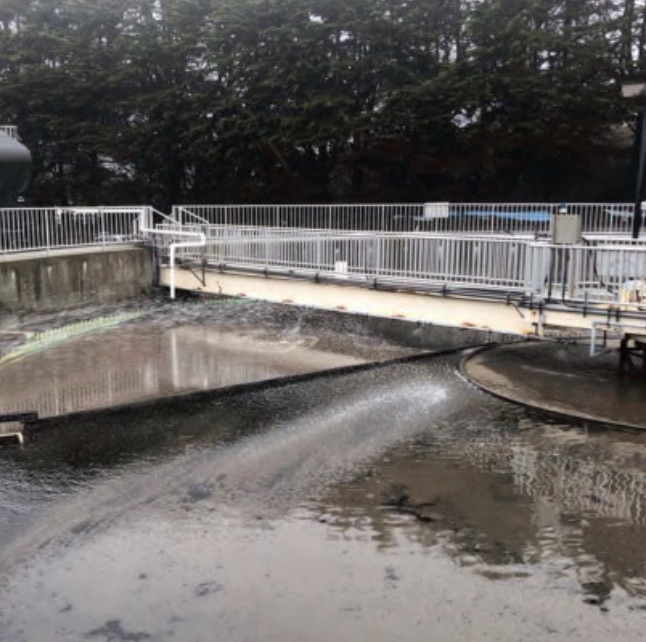Ocean City recognizes bidders, begins review for wastewater treatment plant upgrade – CoastTV

Report on the Proposed Upgrade of the Ocean City Wastewater Treatment Plant
Project Overview and Strategic Importance
The town of Ocean City, Maryland, is advancing a critical infrastructure project to upgrade its 64th Street wastewater treatment plant, an essential facility operational since 1969. On Tuesday, officials formally recognized the seven contracting firms that have submitted bids for this comprehensive modernization effort. The project is necessitated by the age of the facility, with key components having reached the end of their operational lifespan. This initiative is fundamental to the town’s economic and environmental sustainability, as its tourism-based economy is heavily reliant on the quality of its water resources.
Alignment with Sustainable Development Goals (SDGs)
The planned upgrade is a significant step towards achieving several United Nations Sustainable Development Goals (SDGs), reflecting a commitment to long-term environmental stewardship and community well-being.
- SDG 6: Clean Water and Sanitation: The project’s primary objective is to enhance wastewater treatment capabilities, directly contributing to the goal of ensuring access to clean water and sanitation for all. By modernizing the plant, Ocean City will improve the quality of treated water, safeguarding public health and the environment.
- SDG 11: Sustainable Cities and Communities: Upgrading this vital piece of urban infrastructure makes the community more resilient and sustainable. It ensures the continuity of an essential service, which is a cornerstone of a well-functioning and sustainable city.
- SDG 14: Life Below Water: By improving the efficacy of wastewater treatment, the project will reduce the discharge of pollutants into the coastal ecosystem. This directly supports the conservation and sustainable use of the oceans, seas, and marine resources.
- SDG 9: Industry, Innovation, and Infrastructure: This initiative represents a significant investment in building resilient infrastructure. It involves upgrading an industrial facility with modern technology to enhance its efficiency and environmental performance, fostering sustainable industrialization.
Scope of Work
According to Public Works Director Hal Adkins, the project entails a comprehensive overhaul of the existing facility. The planned work includes:
- Construction of a new influent pump station.
- Installation of a modern headworks facility.
- Substantial upgrades to mechanical and electrical equipment.
- General site improvements to enhance operational efficiency and safety.
- Demolition and removal of outdated structures and equipment.
Procurement and Financing
Bid Review Process
Following the formal acknowledgment of the seven bids during the Mayor and Council meeting, town staff, in conjunction with the designated design engineers, Whitman, Requardt and Associates, have been directed to commence a thorough review of the submissions. A contract has not yet been awarded, pending the completion of this evaluation process.
Financial Plan
The project’s financing is structured to ensure long-term viability without placing an undue burden on municipal finances. It will be funded through a bond issue scheduled for the fall of 2025. The associated debt service payments will be covered by the system’s ratepayers, ensuring that the users of the wastewater system contribute directly to its necessary and sustainable upgrade.
Analysis of Sustainable Development Goals (SDGs) in the Article
1. Which SDGs are addressed or connected to the issues highlighted in the article?
- SDG 6: Clean Water and Sanitation: The article’s central theme is the upgrade of a wastewater treatment plant. This directly relates to ensuring the availability and sustainable management of water and sanitation for all. The statement from a vacationer, “clean water is essential to the town,” underscores the importance of this goal.
- SDG 9: Industry, Innovation and Infrastructure: The project involves a “major upgrade” to a facility that has been in operation since 1969 and has “reached the end of their useful life.” This is a clear investment in developing quality, reliable, and sustainable infrastructure by replacing outdated structures with modern equipment.
- SDG 11: Sustainable Cities and Communities: The upgrade is a municipal project in Ocean City aimed at improving essential public services. A modern and efficient wastewater treatment plant is fundamental for making a city, especially a coastal tourist town, safe, resilient, and sustainable.
- SDG 14: Life Below Water: Although not explicitly mentioned, upgrading a wastewater treatment plant in a coastal city like Ocean City is crucial for protecting marine ecosystems. Effective wastewater treatment reduces the amount of pollutants discharged into the ocean, directly contributing to the conservation and sustainable use of marine resources.
2. What specific targets under those SDGs can be identified based on the article’s content?
- Target 6.3: “By 2030, improve water quality by reducing pollution… halving the proportion of untreated wastewater…” The entire project is focused on upgrading the wastewater treatment process. By replacing a plant from 1969, the town aims to improve its capacity to treat wastewater effectively, thereby improving the quality of the water it discharges and reducing pollution.
- Target 9.1: “Develop quality, reliable, sustainable and resilient infrastructure… to support economic development and human well-being…” The article states the plant has “reached the end of their useful life.” The upgrade, which includes a “new influent pump station, a headworks facility, mechanical and electrical equipment upgrades,” is a direct effort to build resilient and sustainable infrastructure to support the town’s economy, which is “based upon people coming down here to use clean water.”
- Target 11.6: “By 2030, reduce the adverse per capita environmental impact of cities, including by paying special attention to… municipal and other waste management.” The upgrade of the wastewater treatment plant is a core component of municipal waste management, directly addressing the environmental impact of the city.
- Target 14.1: “By 2025, prevent and significantly reduce marine pollution of all kinds, in particular from land-based activities…” As a land-based activity, wastewater discharge is a potential source of marine pollution. Upgrading the treatment plant is a preventative measure to reduce the risk of pollution entering the nearby ocean.
3. Are there any indicators mentioned or implied in the article that can be used to measure progress towards the identified targets?
- Implied Indicator for Target 6.3 & 14.1: The primary indicator of progress is the implementation of the project itself. The article mentions the specific actions being taken: “construction of a new influent pump station, a headworks facility, mechanical and electrical equipment upgrades, site improvements and demolition of outdated structures.” The successful completion of this upgrade serves as a direct measure of improved wastewater treatment capacity and reduced pollution from land-based sources.
- Implied Indicator for Target 9.1: An indicator of progress is the investment in and replacement of aging infrastructure. The article notes the project is financed “through a bond issue planned for fall 2025.” This financial commitment and the physical replacement of a plant from 1969 are tangible indicators of developing more reliable and sustainable infrastructure.
- Implied Indicator for Target 11.6: The project to upgrade the wastewater treatment plant is a direct action and indicator of the city’s efforts to improve its municipal waste management systems. The scope of the work outlined by the Public Works Director serves as a measure of the city’s commitment.
4. Summary Table of SDGs, Targets, and Indicators
| SDGs | Targets | Indicators (as identified or implied in the article) |
|---|---|---|
| SDG 6: Clean Water and Sanitation | 6.3: Improve water quality by reducing pollution and increasing treatment of wastewater. | The “major upgrade to the town’s wastewater treatment plant,” including new construction and equipment, to improve the treatment process. |
| SDG 9: Industry, Innovation and Infrastructure | 9.1: Develop quality, reliable, sustainable and resilient infrastructure. | Replacement of a plant from 1969 that has “reached the end of their useful life” and financing the project through a bond issue. |
| SDG 11: Sustainable Cities and Communities | 11.6: Reduce the adverse per capita environmental impact of cities, focusing on municipal waste management. | The implementation of a large-scale municipal project to modernize the town’s wastewater management system. |
| SDG 14: Life Below Water | 14.1: Prevent and significantly reduce marine pollution from land-based activities. | The upgrade of the wastewater plant as a direct action to reduce potential pollution from land-based discharge into the ocean. |
Source: coasttv.com

What is Your Reaction?
 Like
0
Like
0
 Dislike
0
Dislike
0
 Love
0
Love
0
 Funny
0
Funny
0
 Angry
0
Angry
0
 Sad
0
Sad
0
 Wow
0
Wow
0










/campaigns/16-days-of-activism-against-gender-based-violence/pr-web-banner.tmb-1200v.jpg?sfvrsn=8cc7b98e_1#)



































































